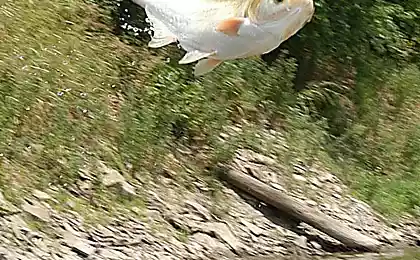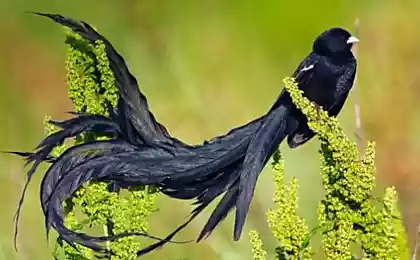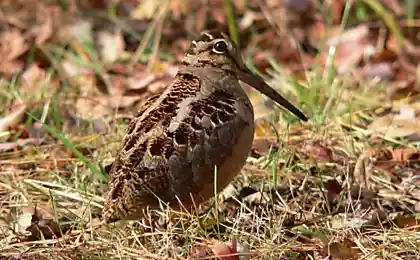150
The inhabitant of the Himalayan Mountains is a blue bird
Seeming almost black from afar, this feathered inhabitant of the Himalayan mountains bears the same name as the elusive fabulous bird of happiness. The blue bird (Latin Myophonus caeruleus), a close relative of the thrush, is found in almost all countries of Central and Southeast Asia and prefers stones in deep trenches near mountain streams, lakes and shallow rivers to tree branches.
Growing up to 35 cm in length and differing from thrushes with a longer tail, blue birds settle one by one or in pairs in mountain gorges, sometimes covered with shrub. In the warm season, they climb to a height of 3,500 meters, where the upper boundary of the forest ends.
Closer to winter, these nomadic birds descend lower and occupy the entire gorge for the family. A pair of blue birds can return to their usual place for years, protecting it from unwanted visitors and driving away their own chicks that have already become independent.
Blue birds are known for their melodic trills, heard at sunset and dawn. Despite the volume (blue birds can be heard singing even through the sound of the waterfall), their voices have a pleasant timbre and resemble flute sounds.
With a strong, pointed beak at the end, blue birds easily deal with shellfish and crabs, breaking them against stones. In spring and summer, they feed on fruits, water insects, snails, beetles and shellfish, and in winter they go to ground food, looking for seeds, berries of wild grapes and rose hips among the stones.
For future offspring, blue birds build massive flat nests of roots, moss and mud and place in deep and narrow crevices near a waterfall or mountain stream.
Source: zoopicture.ru
Growing up to 35 cm in length and differing from thrushes with a longer tail, blue birds settle one by one or in pairs in mountain gorges, sometimes covered with shrub. In the warm season, they climb to a height of 3,500 meters, where the upper boundary of the forest ends.
Closer to winter, these nomadic birds descend lower and occupy the entire gorge for the family. A pair of blue birds can return to their usual place for years, protecting it from unwanted visitors and driving away their own chicks that have already become independent.
Blue birds are known for their melodic trills, heard at sunset and dawn. Despite the volume (blue birds can be heard singing even through the sound of the waterfall), their voices have a pleasant timbre and resemble flute sounds.
With a strong, pointed beak at the end, blue birds easily deal with shellfish and crabs, breaking them against stones. In spring and summer, they feed on fruits, water insects, snails, beetles and shellfish, and in winter they go to ground food, looking for seeds, berries of wild grapes and rose hips among the stones.
For future offspring, blue birds build massive flat nests of roots, moss and mud and place in deep and narrow crevices near a waterfall or mountain stream.
Source: zoopicture.ru























